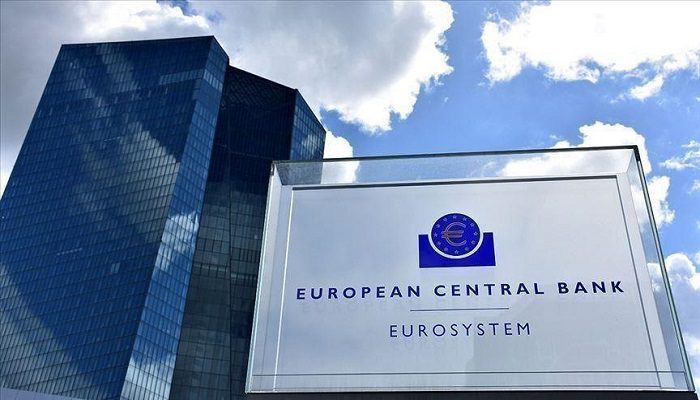As 2024 starts taking shape, the euro braces for a complex environment due to political shifts as well as economic challenges. Parliamentary along with presidential elections across numerous Eurozone countries, such as Austria, Croatia, Belgium, Lithuania, Portugal, as well as Slovakia, are all set to shape up the political landscape. But the spotlight happens to be on the European Parliament elections, which are scheduled between June 6 and 9, 2024, and are set to bring in significant shifts in the European Commission as well as the Council. It is well to be noted that the leaders of the banking industry have to track closely these political events since they happen to have the potential so as to influence policies that go on to affect the euro.
Forthcoming Challenges: Global Conflicts & Fiscal Tightening
The Eurozone goes on to face the challenges of the ongoing global conflicts, which can very well impact economic stability. It is worth noting that domestically, fiscal policies are all set for tightening in 2024, with a decrease in energy support measures, which is expected. The challenge of Germany’s debt brake because of a €60 billion shortfall in public finances goes on to add complexity.
Banking industry managers must go on to prepare for potential effects on fiscal stability and also navigate debates that go on to surround the debt brake, which goes on to divide economists on the requirement for reform.
Economic and Policy Outlook: Inflation, Rate Cuts, as well as ECB’s Stance
Post-pandemic recovery momentum across the Eurozone, which is pushed by services, is slowing down because of higher living costs, weak external demand, as well as tighter monetary policy. Inflation happens to be on a declining trend despite a potential slowdown. The European Central Bank- ECB has also signaled a potential end to the tightening cycle, thereby stressing the need to remain vigilant when it comes to interest rates. Banking leaders must go on to strategize for potential economic shifts, syncing their policies with inflation trends that are evolving and the ECB’s stance in terms of interest rates.
Euro-Dollar Forecasts : Insights in Terms of Banking Strategies
Major banks go on to offer perspectives that are diverse on the EUR/USD exchange rate. The bullish view of the ING Group anticipates a surge to 1.15 against the dollar, pushed by a slowdown across the US economy, thereby leading to Fed interest rate cuts. But they acknowledge the potential effect of weak Eurozone growth, urging banking managers to evaluate risk mitigation strategies. The Bank of America forecasts a similar EUR/USD rise to 1.15 due to undervaluation, while Citigroup foresees economic dearth in Europe, thereby maintaining a forecast of 1.02. Banking industry leaders must go on to assess these projections, thereby considering potential impacts when it comes to currency exchange risk management as well as strategic decision-making.
Actionable Insights in Terms of Payments and Banking Industries in the Face of the Euro’s 2024 Dynamics
Dynamic Currency Risk Management
With the Eurozone going through political shifts as well as economic challenges, payments and banking institutions must go on to embrace dynamic currency risk management strategies. Engage in consistent monitoring of currency projections, making use of real-time data analytics. Come up with hedging mechanisms so as to mitigate potential losses due to exchange rate fluctuations. Partner with financial experts in order to ensure agility when it comes to adapting strategies based on evolving economic as well as geopolitical conditions.
Payment Methodologies That Are Innovative
The economic landscape, which is indeed evolving, mandates the payment industry leaders to invent their payment methodologies. Explore as well as integrate diverse payment methods that go on to resonate with shifting consumer behaviors. Consider embracing decentralized finance- DeFi and blockchain technologies in order to enhance transaction security along with efficiency. Foster partnerships with fintech firms so as to stay at the forefront when it comes to payment innovation, offering customers with seamless as well as secure financial transactions.
Fraud Prevention Systems That Are Resilient
Due to the impact of potential economic issues as well as increased digital transactions, giving priority to resilient fraud prevention systems happens to be paramount. Funding in cutting-edge technologies like artificial intelligence and machine learning in order to detect as well as prevent fraudulent activities. Conduct regular evaluations and updates so as to stay ahead of emerging fraud tactics. Partner with sector peers to share insights and, at the same time, collectively strengthen the defense when it comes to cyber threats.
Strategic Customer Education Steps
In the face of economic uncertainties, give customers the prowess of financial literacy by way of strategic education initiatives. Come up with some comprehensive programs so as to enhance customers’ understanding when it comes to the economic landscape, potential effects on their finances, and also the significance of financial management that’s prudent. Making the utmost use of digital channels and partnerships along with educational institutions so as to disseminate relevant data, pushing a customer base that is financially literate.
Steps Concerning Agile Regulatory Compliance
In a backdrop that’s marked by political events, payments as well as banking institutions must go on to maintain agility when it comes to regulatory compliance. Come up with robust regulatory technology- RegTech frameworks in order to adapt quickly to the shifting regulations. Go on to partner with regulatory bodies as well as industry associations in order to stay informed when it comes to potential shifts in requirements related to compliance. Nurture a culture of awareness in compliance within the organization, making sure that all stakeholders happen to be well-versed in the regulatory spectrum.
By having these actionable insights incorporated, the payments and banking industries cannot just go through the challenges that are presented by the Euro’s 2024 dynamics but at the same time also position themselves for resilience, sustained growth, and innovation in a financial environment that is transitioning quite rapidly.






















